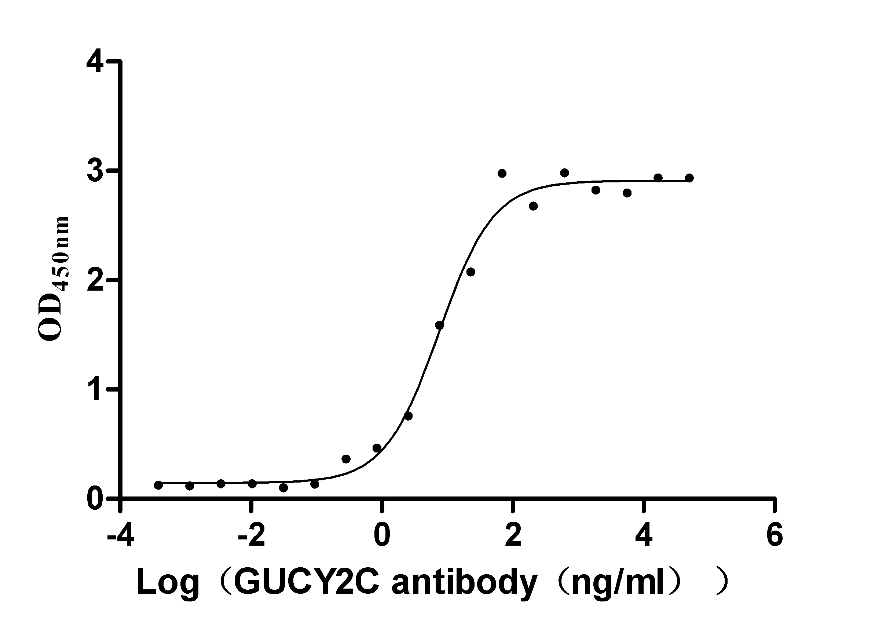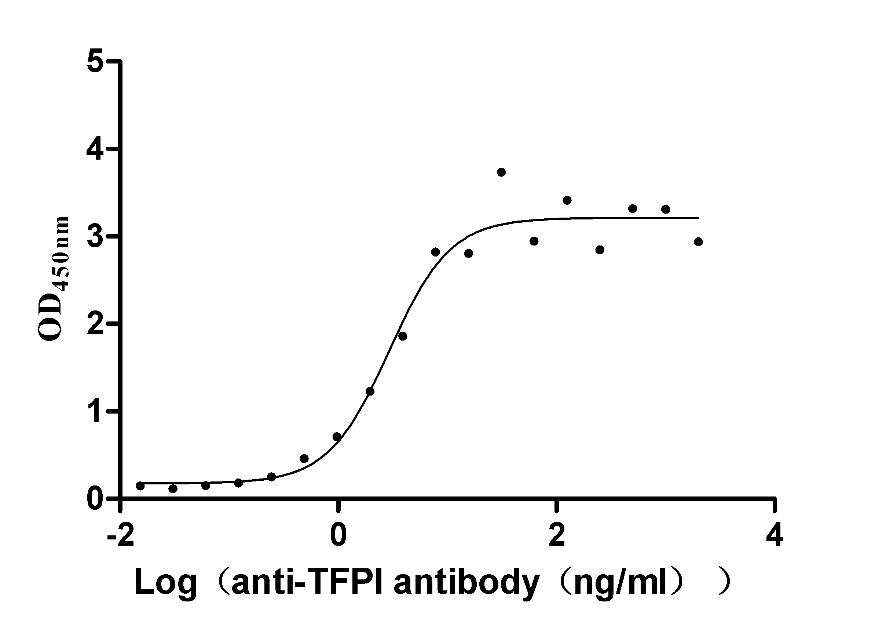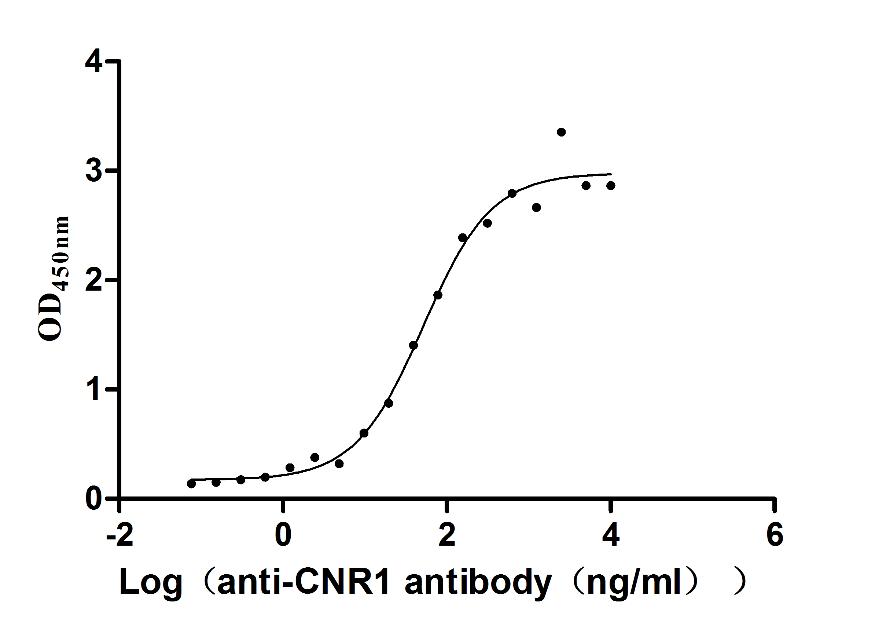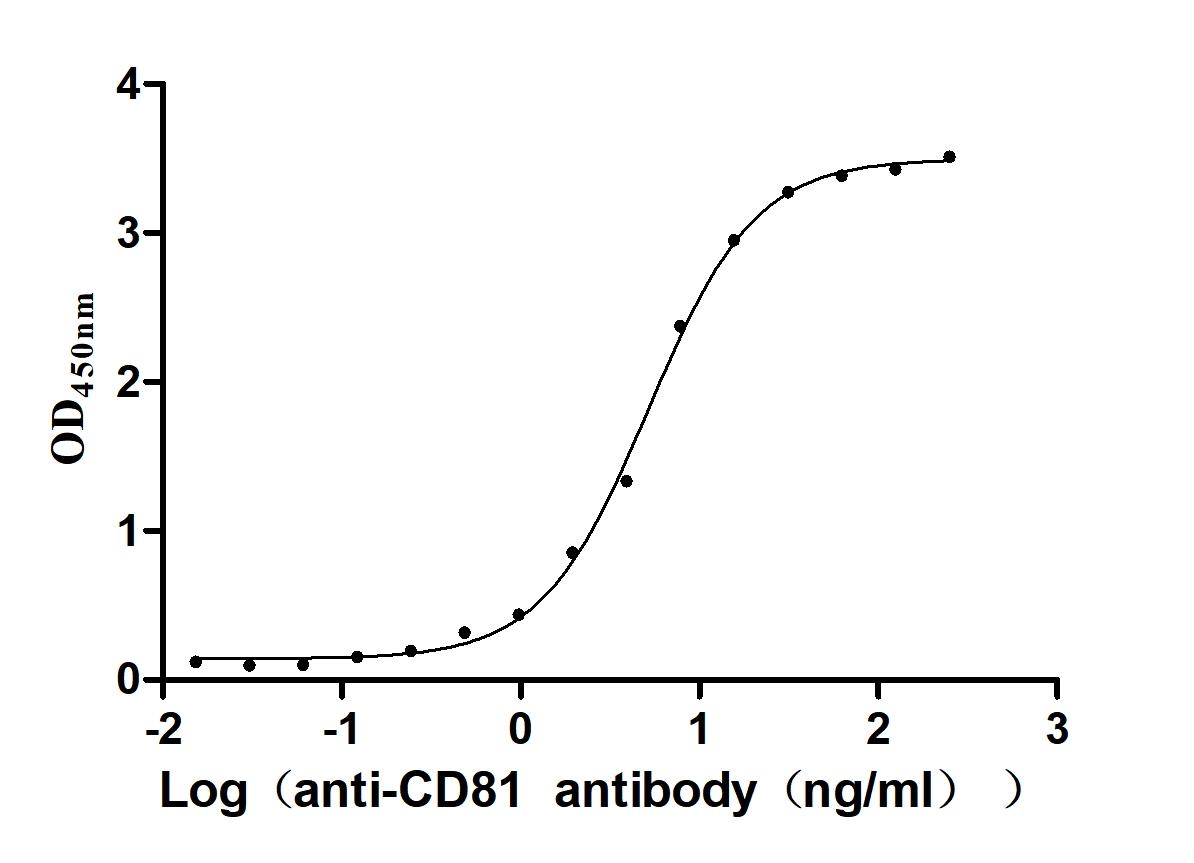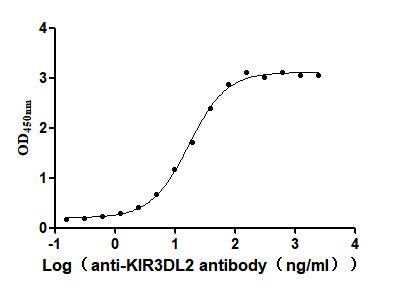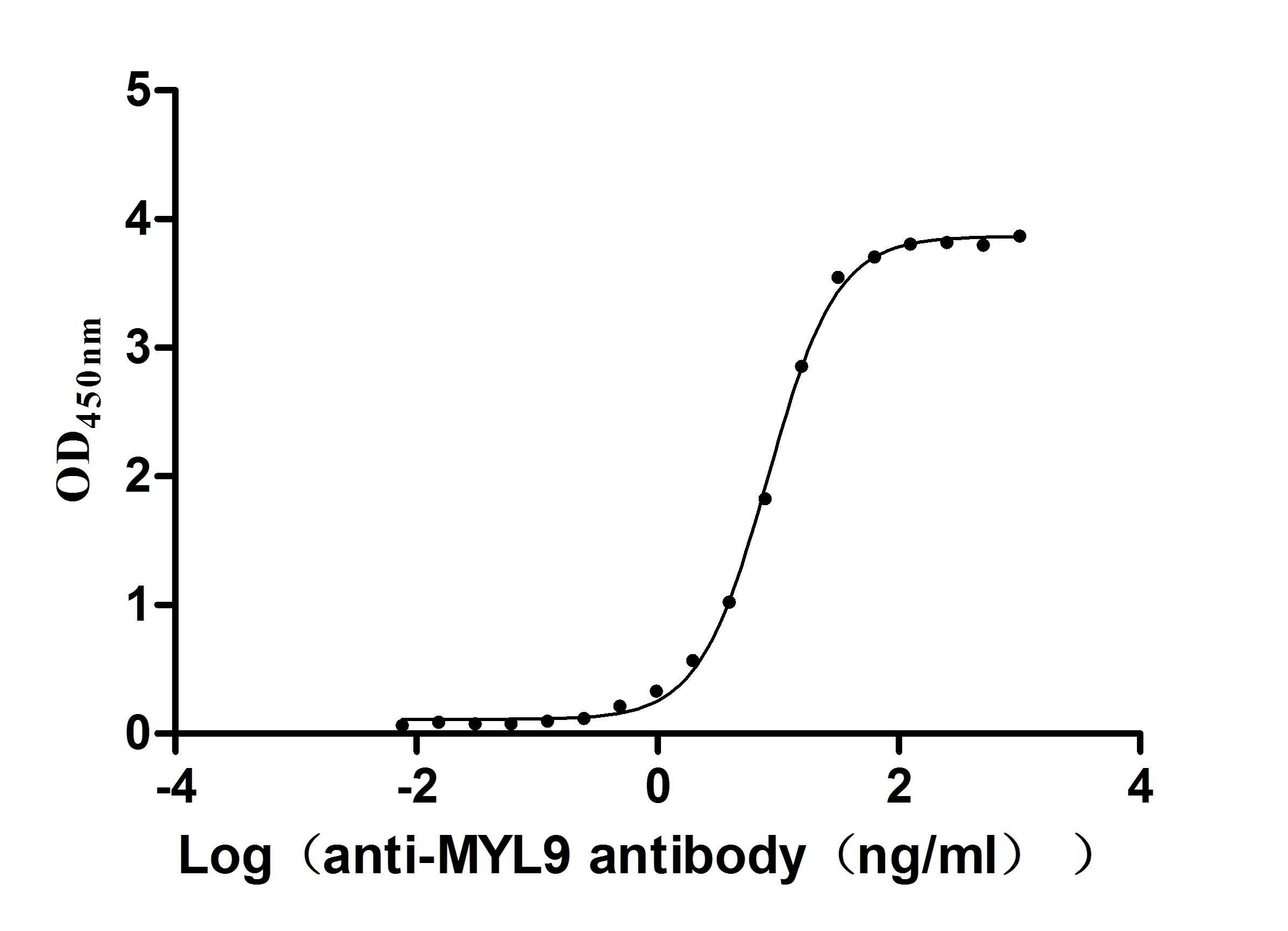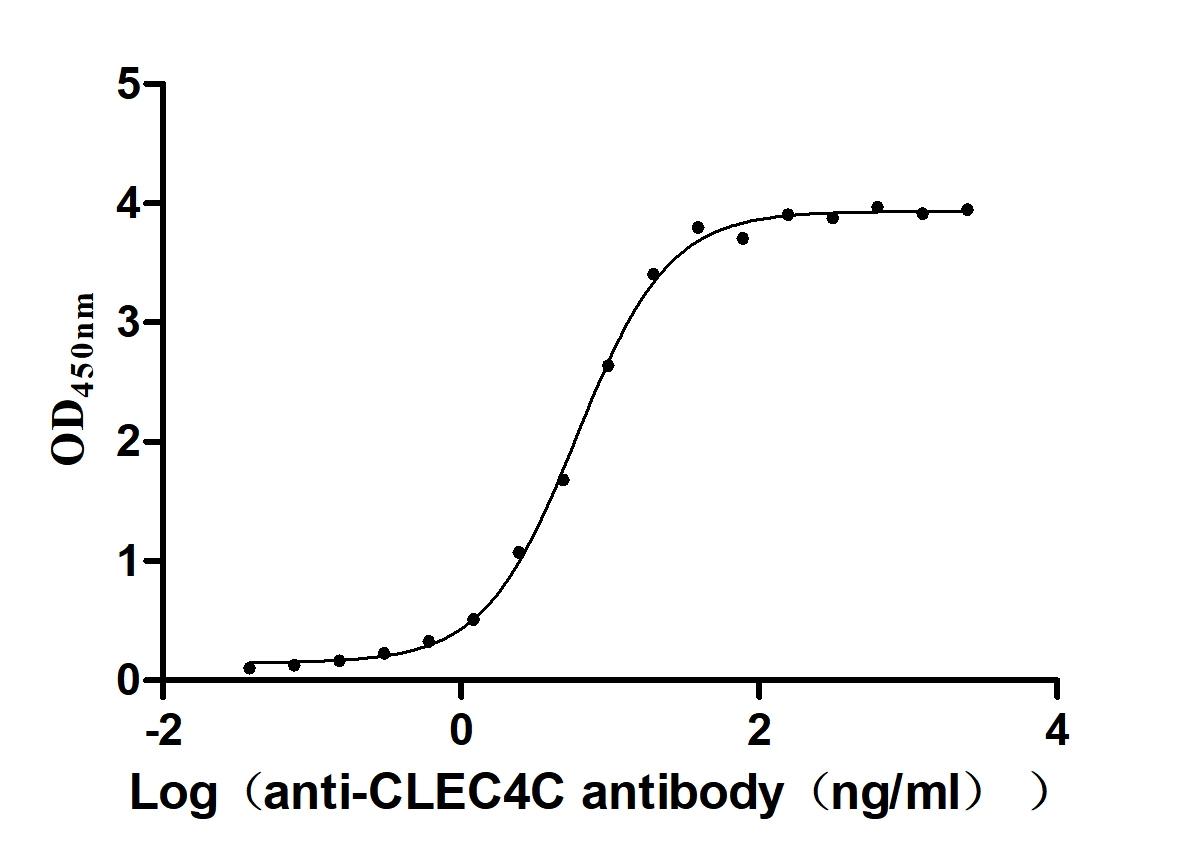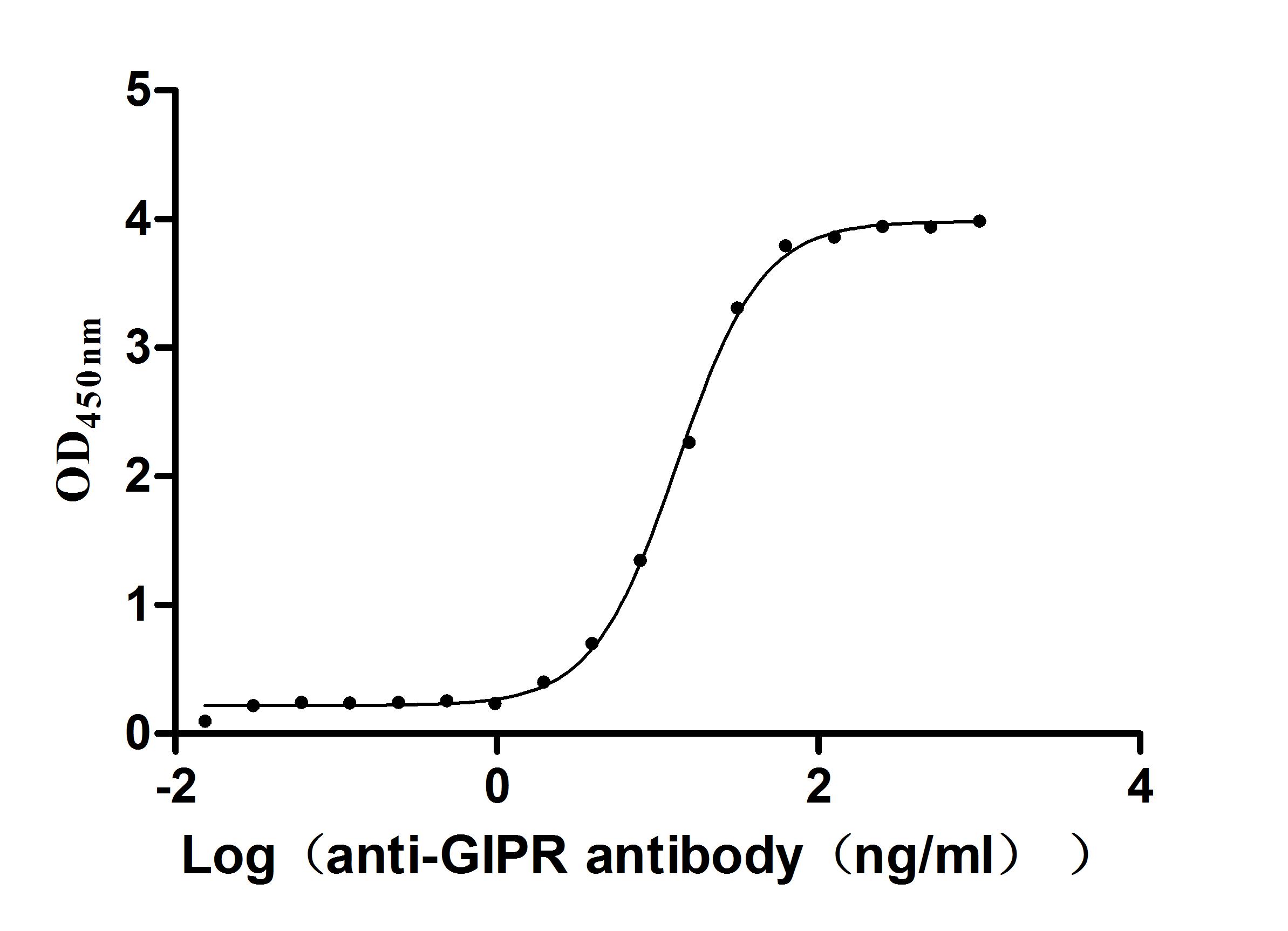Recombinant Human Insulinoma-associated protein 1 (INSM1 IA1)
-
中文名稱:
-
貨號:CSB-YP2305HU
-
規(guī)格:
-
來源:Yeast
-
其他:
-
中文名稱:
-
貨號:CSB-EP2305HU
-
規(guī)格:
-
來源:E.coli
-
其他:
-
中文名稱:
-
貨號:CSB-EP2305HU-B
-
規(guī)格:
-
來源:E.coli
-
共軛:Avi-tag Biotinylated
E. coli biotin ligase (BirA) is highly specific in covalently attaching biotin to the 15 amino acid AviTag peptide. This recombinant protein was biotinylated in vivo by AviTag-BirA technology, which method is BriA catalyzes amide linkage between the biotin and the specific lysine of the AviTag.
-
其他:
-
中文名稱:
-
貨號:CSB-BP2305HU
-
規(guī)格:
-
來源:Baculovirus
-
其他:
-
中文名稱:
-
貨號:CSB-MP2305HU
-
規(guī)格:
-
來源:Mammalian cell
-
其他:
產(chǎn)品詳情
-
純度:>85% (SDS-PAGE)
-
基因名:INSM1
-
Uniprot No.:
-
別名:Insulinoma-associated protein 1; Zinc finger protein IA-1; INSM1 IA1
-
種屬:Homo sapiens (Human)
-
蛋白標(biāo)簽:Tag?type?will?be?determined?during?the?manufacturing?process.
The tag type will be determined during production process. If you have specified tag type, please tell us and we will develop the specified tag preferentially. -
產(chǎn)品提供形式:Liquid or Lyophilized powder
Note: We will preferentially ship the format that we have in stock, however, if you have any special requirement for the format, please remark your requirement when placing the order, we will prepare according to your demand. -
復(fù)溶:We recommend that this vial be briefly centrifuged prior to opening to bring the contents to the bottom. Please reconstitute protein in deionized sterile water to a concentration of 0.1-1.0 mg/mL.We recommend to add 5-50% of glycerol (final concentration) and aliquot for long-term storage at -20℃/-80℃. Our default final concentration of glycerol is 50%. Customers could use it as reference.
-
儲存條件:Store at -20°C/-80°C upon receipt, aliquoting is necessary for mutiple use. Avoid repeated freeze-thaw cycles.
-
保質(zhì)期:The shelf life is related to many factors, storage state, buffer ingredients, storage temperature and the stability of the protein itself.
Generally, the shelf life of liquid form is 6 months at -20°C/-80°C. The shelf life of lyophilized form is 12 months at -20°C/-80°C. -
貨期:Delivery time may differ from different purchasing way or location, please kindly consult your local distributors for specific delivery time.Note: All of our proteins are default shipped with normal blue ice packs, if you request to ship with dry ice, please communicate with us in advance and extra fees will be charged.
-
注意事項:Repeated freezing and thawing is not recommended. Store working aliquots at 4°C for up to one week.
-
Datasheet :Please contact us to get it.
靶點詳情
-
功能:Sequence-specific DNA-binding transcriptional regulator that plays a key role in neurogenesis and neuroendocrine cell differentiation during embryonic and/or fetal development. Binds to the consensus sequence 5'-[TG][TC][TC][TT][GA]GGG[CG]A-3' in target promoters. Acts as a transcriptional repressor of NEUROD1 and INS expression via its interaction with cyclin CCND1 in a cell cycle-independent manner. Negatively regulates skeletal muscle-specific gene expression in endocrine cells of the pituitary by inhibiting the Notch signaling pathway. Represses target gene transcription by recruiting chromatin-modifying factors, such as HDAC1, HDAC2, HDAC3, KDM1A and RCOR1 histone deacetylases. Binds to its own promoter, suggesting autoregulation as a self-control feedback mechanism. Competes with histone H3 for the same binding site on the histone demethylase complex formed by KDM1A and RCOR1, and thereby inhibits demethylation of histone H3 at 'Lys-4'. Promotes the generation and expansion of neuronal basal progenitor cells in the developing neocortex. Involved in the differentiation of endocrine cells of the developing anterior pituitary gland, of the pancreas and intestine, and of sympatho-adrenal cells in the peripheral nervous system. Promotes cell cycle signaling arrest and inhibition of cellular proliferation.
-
基因功能參考文獻(xiàn):
- Our results suggest that INSM1 is a useful immunohistochemical marker for diagnosing pancreatic neuroendocrine tumor. PMID: 28849340
- INSM1 is a sensitive marker for Merkel cell carcinoma PMID: 29148079
- Our data suggest that children with the INSM1 binding site within the CLDN14 risk haplotype have a higher likelihood of hypercalciuria and kidney stones. Enhanced CLDN14 expression may play a role in the pathophysiology of their hypercalciuria. PMID: 28229505
- High INSM1 expression is associated with small-cell lung cancer. PMID: 28667074
- Suggest that INSM1 is valuable for identification of the high-grade thoracic neuroendocrine carcinomas that are sometimes negative for synaptophysin, chromogranin, and CD56. PMID: 28719469
- Solution NMR structure of zinc finger 4 and 5 from human INSM1 has been presented. PMID: 28160313
- INSM1 is closely related to the development of high-grade neuroendocrine carcinoma of uterine cervix, and a useful new neuroendocrine marker in conducting its correct and rapid diagnosis PMID: 27908529
- Data supports our hypothesis that a positive-feedback loop of sonic hedgehog signaling induced INSM1 through N-myc and INSM1 enhanced N-myc stability contributing to the transformation of human neuroblastoma. PMID: 26456864
- Small cell lung cancer tissues were strongly positive for INSM1. INSM1 signal was not detected on normal adjacent tissues from lung cancer patients or normal lung tissues PMID: 27072116
- the INSM1-promoter specific conditional replicating adenovirus represents a sensitive diagnostic tool to aid clinicians in the detection of NE tumors. PMID: 26530405
- Insulinoma-Associated Protein 1 is a crucial regulator of neuroendocrine differentiation in lung cancer. PMID: 26482608
- INSM1 autoantibodies were associated with risk of developing type 1 diabetes. PMID: 25523979
- INSM1 expression was significantly increased in Neuroendocrine neoplastic vs nonneoplastic tissue. PMID: 26386079
- Both the AR42J cell line and the primary cultured mouse acinar cells support role for INSM1 in pancreatic acinar cell trans-differentiation model. PMID: 21830214
- The results suggest that INSM1 up-regulation plays a positive role in HSV-1 replication, probably by binding to the ICP0 promoter. PMID: 21609490
- The INSM1 promoter can direct herpes simplex virus thymidine kinase gene expression in a nude mouse model of neuroendocrine cancer and effectively repress tumor growth in response to ganciclovir treatment. PMID: 19604042
- Data show that the consistent functional effect of INSM1, either with or without other ITFs, promotes pancreatic duct cell differentiation as well as induces Panc-1 cell cycle arrest. PMID: 20215568
- IA-1 gene was shown to be developmentally regulated in fetal pancreatic cells, and its expression pattern is consistent with parallel changes in islet-specific transcription factors during the endocrine differentiation of AR42J cells. PMID: 11854618
- IA-1 gene is developmentally expressed in the nervous system and the NeuroD1/E47 transcription factors up-regulate IA-1 gene expression through the proximal E-box element of the IA-1 promoter PMID: 12890672
- results presented in this study define INSM1 as a transcriptional repressor of the neuroD/b2 gene. The molecular mechanism of INSM1 transcriptional repression is attributed to the recruitment of cyclin D1 and HDAC-1 and -3 PMID: 16569215
- in mice and humans, INSM1 is likewise expressed transiently during terminal neurogenic divisions, from late progenitors to nascent neurons, and particularly during symmetric neuronogenic divisions. PMID: 18205207
- INSM1 role as an important regulator during neuroendocrine differentiation [review] PMID: 19246490
顯示更多
收起更多
-
亞細(xì)胞定位:Nucleus.
-
蛋白家族:INSM1 family
-
組織特異性:Expressed in pancreatic duct cells. Expressed in several tumor cell lines of neuroendocrine origin including pheochromocytoma, medullary thyroid carcinoma, insulinoma, medulloblastoma, retinoblastoma, pheochromacytoma, medullary thyroid carcinoma and smal
-
數(shù)據(jù)庫鏈接:
Most popular with customers
-
Recombinant Human Heat-stable enterotoxin receptor (GUCY2C), partial (Active)
Express system: Mammalian cell
Species: Homo sapiens (Human)
-
Recombinant Rabbit Tissue factor pathway inhibitor (TFPI) (Active)
Express system: Mammalian cell
Species: Oryctolagus cuniculus (Rabbit)
-
Recombinant Human Cannabinoid receptor 1 (CNR1)-VLPs (Active)
Express system: Mammalian cell
Species: Homo sapiens (Human)
-
Recombinant Human CD81 antigen (CD81), partial (Active)
Express system: Mammalian cell
Species: Homo sapiens (Human)
-
Recombinant Human Killer cell immunoglobulin-like receptor 3DL2 (KIR3DL2), partial (Active)
Express system: Mammalian cell
Species: Homo sapiens (Human)
-
Recombinant Human Myosin regulatory light chain 12B (MYL12B) (Active)
Express system: E.coli
Species: Homo sapiens (Human)
-
Recombinant Macaca fascicularis C-type lectin domain family 4 member C(CLEC4C), partial (Active)
Express system: Mammalian cell
Species: Macaca fascicularis (Crab-eating macaque) (Cynomolgus monkey)
-
Recombinant Macaca fascicularis Gastric inhibitory polypeptide receptor (GIPR), partial (Active)
Express system: yeast
Species: Macaca fascicularis (Crab-eating macaque) (Cynomolgus monkey)


